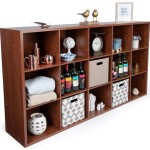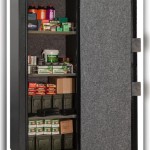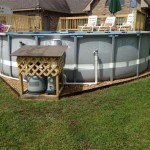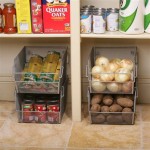Maximizing Space With Sheet Rack Storage System Design Guide
Sheet rack storage systems are integral to efficient material handling and space optimization within manufacturing, fabrication, and warehousing environments. These systems are designed to store flat, often large, sheets of materials like metal, wood, plastic, or composite panels, protecting them from damage and facilitating easy access. Effective design is paramount, as it directly impacts operational efficiency, safety, and the overall utilization of available space. This guide provides a comprehensive overview of key considerations for designing and implementing an optimized sheet rack storage system.
The initial planning phase is critical and encompasses several vital aspects. A comprehensive understanding of the types and quantities of materials to be stored is paramount. This includes considering the dimensions, weight, and fragility of the sheets. For instance, storing delicate aluminum sheets requires a different approach than storing robust steel plates. Accurate inventory forecasting further informs the design process by predicting future storage needs and preventing potential bottlenecks. Furthermore, evaluating the available floor space and ceiling height is necessary to determine the optimal layout and configuration of the sheet rack system. Constraints such as columns, doorways, and existing equipment must be taken into account to ensure seamless integration within the facility.
Understanding Material Properties and Storage Requirements
The specific characteristics of the materials being stored are a driving force in the design of a sheet rack storage system. Material weight is a primary factor, as it dictates the load-bearing capacity required for the racks. This capacity must be calculated accurately to prevent structural failures and ensure the safety of personnel and materials. Sheet dimensions determine the required rack size and spacing, ensuring that sheets can be stored and retrieved efficiently without damage. Material fragility is another crucial consideration. Delicate materials like glass require specialized racking systems with protective padding or dividers to prevent scratches, bending, or breakage. Environmental factors, such as humidity and temperature, may also necessitate specific storage solutions. For example, storing wood sheets in a humid environment may require racks that promote airflow to prevent warping or mold growth. Metal sheets prone to rust may require coatings or storage in a climate-controlled environment.
Different material types will require different racking configurations. Vertical storage is often preferred for long, thin materials, while horizontal storage is better suited for heavier, wider sheets. Cantilever racks are ideal for storing lengthy items, while pigeonhole racks offer individual compartments for organized storage and easy retrieval of different sheet types. Consideration must also be given to the accessibility of the stored materials. A frequently accessed material should be placed in an easily reachable location, while less frequently used materials can be stored in less accessible areas. This optimization reduces retrieval time and improves overall workflow efficiency.
Inventory management also plays a vital role. Accurately tracking the location and quantity of materials within the storage system is crucial for efficient order fulfillment and inventory control. Utilizing barcode scanning, RFID technology, or warehouse management software (WMS) can significantly improve inventory accuracy and streamline the retrieval process. A well-organized inventory system minimizes waste, reduces the risk of misplaced materials, and optimizes the use of storage space.
Selecting the Right Sheet Rack Configuration
Choosing the appropriate sheet rack configuration is critical for maximizing space utilization and operational efficiency. Several configuration options are available, each with its own advantages and disadvantages. Vertical racks store sheets upright, maximizing floor space and allowing for easy access to individual sheets. However, they may require specialized lifting equipment for handling heavy sheets. Horizontal racks store sheets flat, providing better support for heavy materials and preventing bending or warping. However, they require more floor space and may make accessing specific sheets more challenging. Cantilever racks are designed for storing long, bulky materials and consist of vertical columns with extending arms that support the sheets. These racks are ideal for storing materials of varying lengths. Pigeonhole racks consist of individual compartments or slots, providing organized storage for different sheet types and sizes. They are well-suited for storing small quantities of various materials.
The selection of rack configuration should consider the available floor space, ceiling height, and the weight and dimensions of the sheets. Vertical racks are ideal for maximizing limited floor space, while horizontal racks are better suited for facilities with ample floor space and the need to store heavy materials. Cantilever racks are beneficial for facilities storing long, bulky materials, and pigeonhole racks are suitable for facilities that require organized storage of diverse sheet types. The choice also depends on the type of equipment available for material handling. If forklifts are used, the racks should be designed with sufficient aisle space for safe and efficient forklift operation. If overhead cranes are used, the racks should be positioned to allow for easy access and lifting. Furthermore, the design should consider the potential for future expansion. Modular racking systems offer flexibility and can be easily reconfigured or expanded to accommodate changing storage needs.
Safety features are also integral to selecting the ideal sheet rack configuration. Racks should be designed with sufficient load-bearing capacity and stability to prevent collapse or tipping. Safety barriers and guardrails should be installed to protect personnel and prevent accidental damage to the stored materials. Furthermore, proper lighting is essential for ensuring safe and efficient material handling. Adequate lighting improves visibility and reduces the risk of accidents. Regular inspections and maintenance are crucial for ensuring the continued safety and functionality of the sheet rack system.
Optimizing Space Utilization and Accessibility
Efficient space utilization and accessibility are paramount for maximizing the benefits of a sheet rack storage system. Designing for high-density storage is crucial, particularly in facilities with limited space. This can be achieved through the use of vertical racks, narrow aisle racking, or automated storage and retrieval systems (AS/RS). Vertical racks maximize vertical space, while narrow aisle racking reduces the width of aisles, allowing for more racks to be installed within a given area. AS/RS systems automate the storage and retrieval process, further optimizing space utilization and improving efficiency. The design should also consider the flow of materials within the facility. The storage system should be positioned to minimize travel distances between storage areas and workstations, reducing handling time and improving overall workflow efficiency.
Accessibility of stored materials is equally important. Sheets should be stored in a manner that allows for easy retrieval without the need to move other materials. This can be achieved through the use of pigeonhole racks, cantilever racks, or selective racking systems. Proper labeling and identification of stored materials are essential for efficient retrieval. Clear and concise labels should be placed on each rack and sheet, indicating the material type, dimensions, and quantity. Utilizing barcode scanning or RFID technology can further streamline the retrieval process and reduce the risk of errors. The design should also consider the ergonomics of material handling. Racks should be positioned at a height that allows for easy loading and unloading without straining or injuring personnel. Lifting aids, such as hoists or cranes, should be provided for handling heavy sheets. Proper training on safe material handling techniques is essential for preventing accidents and injuries.
Integrating the sheet rack storage system with other aspects of the facility’s operation is crucial for achieving optimal efficiency. The storage system should be integrated with the warehouse management system (WMS) to provide real-time visibility of inventory levels and location. This integration allows for efficient order fulfillment, inventory control, and demand forecasting. The design should also consider the integration with other material handling equipment, such as forklifts, cranes, and conveyors. The layout of the facility should be optimized to allow for seamless movement of materials between the storage system and other workstations. By optimizing space utilization and accessibility, and by integrating the storage system with other aspects of the facility’s operation, businesses can significantly improve efficiency, reduce costs, and enhance overall competitiveness.
Sheet Metal Storage Racks Solve Floor Space Problems

Guide To High Density Storage Systems For Industrial Efficiency

Sheet Steel Storage Rack Metal Racks Pipe Cantilever Shelf Manufacturers

Sheet Steel Storage Rack Metal Racks Pipe Cantilever Shelf Manufacturers

Creative Storage Solutions For Small Closets Maximize Your Space Lancia Homes Fort Wayne In

Guide To High Density Storage Systems For Industrial Efficiency

Gravity Flow Rack Storage Solutions Improve Capacity Function

What S A Sheet Metal Storage Rack Aceally Racking

Sheet Steel Storage Rack Metal Racks Pipe Cantilever Shelf Manufacturers

A Guide To Designing Ive Industrial Storage Facility
Related Posts








